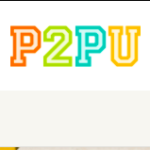 Over the years, one benefit of computer access in the home has been the resources of free on-line training. There are so many classes on so many topics, much of it free. It’s a wonderful opportunity. But only if people actually finish classes that they are interested in. Learning circles, or peer-to-peer learning, provides the support of a traditional classroom for participants to study as a group. It’s a great idea, going back thousands of years, but how to get started?
Over the years, one benefit of computer access in the home has been the resources of free on-line training. There are so many classes on so many topics, much of it free. It’s a wonderful opportunity. But only if people actually finish classes that they are interested in. Learning circles, or peer-to-peer learning, provides the support of a traditional classroom for participants to study as a group. It’s a great idea, going back thousands of years, but how to get started?
By checking out P2PU’s website at https://www.p2pu.org/
P2PU is a distributed organization, incorporated as a 501(c)3 in the United States, with the heaviest concentration of work currently in the United States, Canada, Kenya and South Africa. It was born out of the 2007 Cape Town Open Education Declaration. Founded by Philipp Schmidt, Delia Browne, Neeru Paharia, Stian Haklev, and Joel Thierstein, P2PU believed that with adequate social support, anyone can learn almost anything online for free. This strategy reached tens of thousands of learners in more than 50 countries across a number of projects and collaborations.
After years of working exclusively online, P2PU partnered with Chicago Public Library in 2014 to run in-person study groups for library patrons. Over the next 18 months, learning circles dramatically increased the completion rates for online learning, and reached new audiences. Another benefit was the strong social bonds formed between students from diverse backgrounds. This work has expanded to libraries around the world with learning circle materials and community tools openly-licensed and free to use.
Ever since we learned about peer-to-peer learning circles at the June 2016 NDIA conference, we had discussed setting one up since P2PU provides great free material for running learning circles. And we like to try things out before recommending them. We were very interested in: “P2PU has found a much-higher success rate of people taking online classes in a learning circle instead of on their own.” We can heartily endorse that finding, since in the five-week session we facilitated, all seven original participants completed all of the course material. The majority said that it was the weekly class get-togethers that motivated them to keep doing the course material and practicing. One participant mentioned two months later that while she had signed up for two other courses from Future Learn, she hadn’t completed either and to let her know when I scheduled another peer-to-peer course. She gave full credit to the weekly meetings for her completing the earlier course. We documented our experience with running a peer-to-peer class in one of our white papers.
As mentioned in our June 2018 Newsletter, PBDD attended the P2PU workshop in Kansas City and met other learning circle participants as well as some of the P2PU staff: Nico Koenig, Sharon Kennedy, Grif Peterson and Dirk Uys.
We found this very well-run workshop useful. Barry and I have experience with conferences and workshops in the corporate world, but not as much in the nonprofit world. Some of the things that made this a good workshop included:
- Having the majority of participants’ time being spent on specific tasks within small groups with clear outputs expected.
- While P2PU had clearly planned for this workshop carefully, they were relaxed during it and prepared to change direction if needed, such as adding another exercise when we were ahead of schedule.
- P2PU did a good job of demonstrating that there’s no need to explain in detail if an activity is modeled properly and some of the participants already have experience with the activity. An example of this was the plus/delta activity at the end of the first day. There was no explanation given. A P2PU person just started doing it, and while a couple of people looked confused, everyone understood what to do by the time it was their turn.
- It’s good to make all participants feel valued. For example, the questions about sharing experiences with peer-to-peer learning included a question about future plans for people who hadn’t run a learning circle yet.
Late in 2017, P2PU joined PBDD as a partner. A great way to get familiar with their work is by finding and joining a class in your area. Or you can contract with P2PU to help you out. They also have a community forum that is a good place to learn more. We think P2PU is a valuable resource for our partners and encourage you to ask us for more information or check out their website at p2pu.org.
Katherine Lato, VP-Communication PBDD




By October 2018 Newsletter - Partners Bridging the Digital Divide September 29, 2018 - 9:30 am
[…] 3) The latest partner profile is on P2PU – check it out at:https://pbdd.org/p2pu/ […]